Simgot EW300 - Tribrid. Democratised.
To me, there has always been something alluring about the idea of “tribrid” IEMs, the ones that use a combination of three different types of drivers. No, featuring a tribrid design does not guarantee that an IEM would be exceptional. I like to think of a tribrid design as the potential to be exceptional, but whether that potential is realised is another matter entirely. Thus, tribrid IEMs sometimes feel like pricy lottery tickets in the audio world. Previously, Simgot has been able to bring quadbrid design down to the $135 price tag. This time, they continue to push the envelope by bringing tribrid down to $70 bracket. Did they succeed? Read on to find out, my friends.
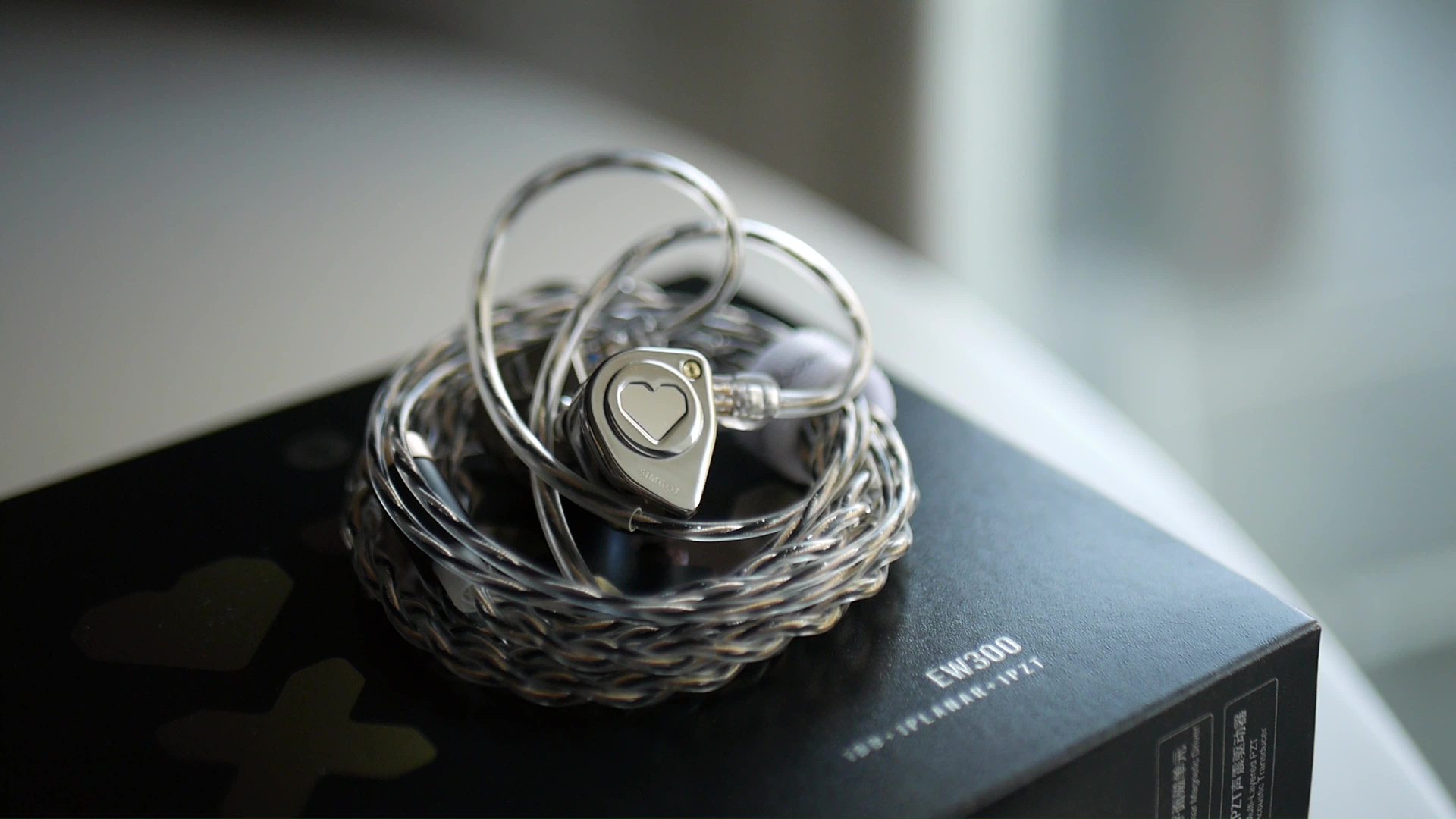
Forewords
- What I look for in an IEM is immersion. I want to feel the orchestra around my head, track individual instruments, and hear all of their textures and details. I’m not picky about tonality, as long as it is not make the orchestra, violin, cellos, and pianos sound wrong.
- I rate IEMs within with a consistent scale from 1 (Poor) to 3 (Good) to 5 (Outstanding). An overall ranking of 3/5 or above is considered positive.
- Ranking list and measurement database are on my IEM review blog.
- The terminology for subjective impressions in this review is based on the Audio Wheel for reproduced sound defined in the technical report ITU-R BS.2399-0
- This review is based on a review sample from Simgot (Thank you Betty @ Simgot!). I have no affiliation with or financial interest in Simgot.
- The unit retails for $69.99 to $79.99 at the time this review was published. Unaffiliated link: Linsoul
General Information
EW300 is a 3-driver, tribrid IEM. Its driver topology includes a 10mm dynamic driver (DD), a 6mm planar mangetic driver, and a piezoelectric driver (PZT). I couldn’t find the precise information regarding the crossover design, but it is likely a 3-way design with the DD handling bass and midrange, the 6mm planar driver handling the lower- and mid-treble, and the PZT handling the upper treble. The design and placement of the PZT driver seem identical to that of SuperMix4. This driver fills in the upper treble by vibrating the entire shells from behind the faceplate, making it sort of a “bone conduction driver.”
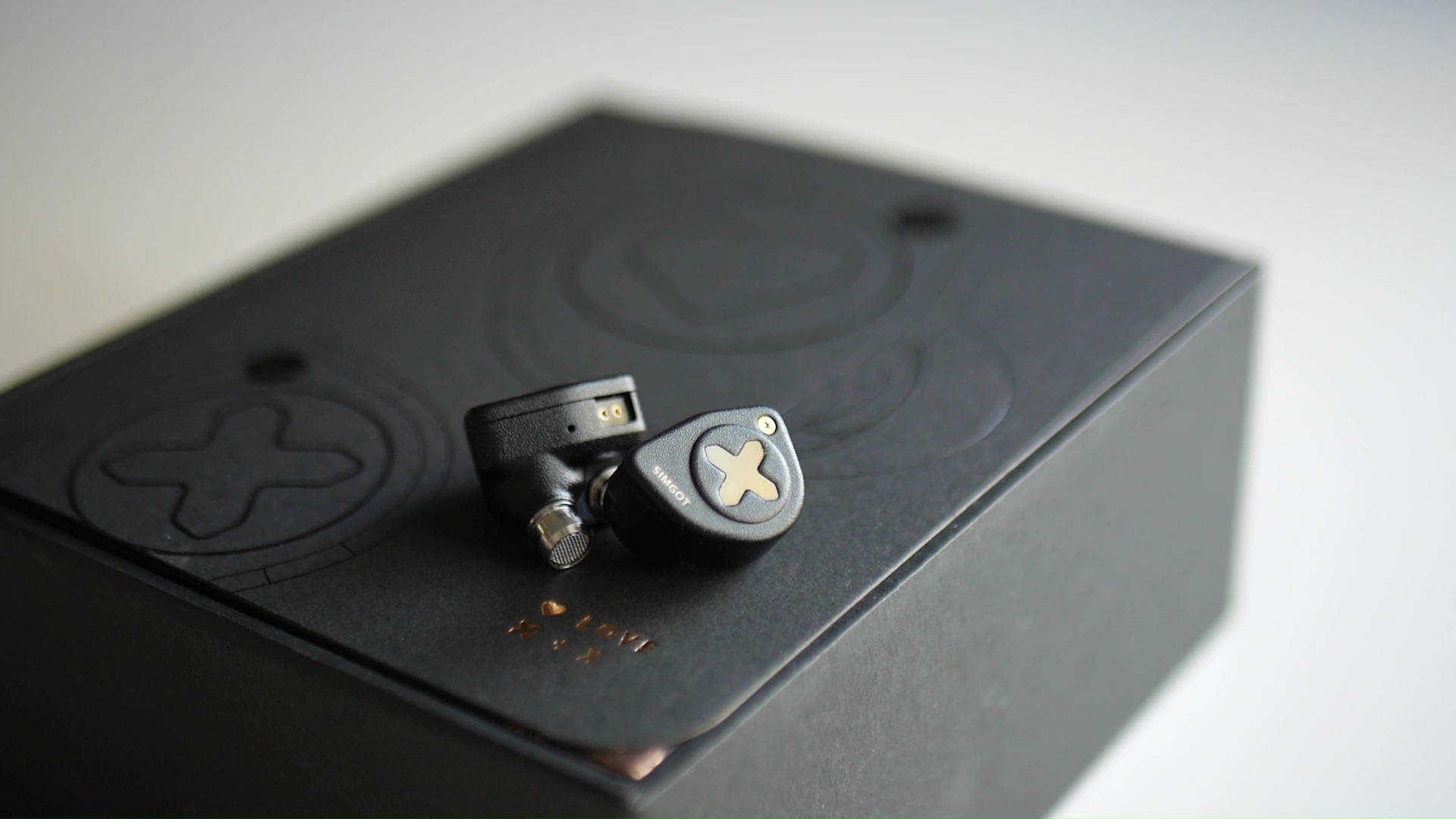
Readers with a strong attention to details would likely realise that EW300’s driver topology is almost identical to that of SuperMix4, besides missing the BA driver. I was surprised to find that the planar driver was also swapped from the “rectangular” variety found in Astell & Kern Zero 1 and Zero 2 IEMs to a miniaturised 6mm planar driver. This driver sits right in front of the 10mm dynamic driver, and you can see it when you remove the nozzles of EW300. The swap of planar driver suggests that the crossover design was also modified.
Before we move on, let’s talk about the confusing product line of EW300. By the time this review was written, there are three versions of EW300:
- EW300 standard edition ($69.99): Simple, no frill version.
- EW300 HBB edition ($75.99): A retuned version of the standard edition, made in collaboration with the IEM reviewer HBB.
- EW300 DSP edition ($79.99): The standard edition packaged with a DSP cable rather than the usual IEM cable. This DSP cable can be thought of as a USB DAC/amp in the form of an IEM cable. There is an EQ profile baked in the DAC chip, meaning the sound of any IEM attached to this cable would change slightly.
All three versions offer two types of interchangeable nozzles to change the sound signature of the IEM. Simgot also provide acoustic foams that you can stuff into the nozzles to further fine-tune the sound to your preference. This dizzying array of versions and customisation makes reading and writing reviews of EW300 quite challenging. In this review, I’ll focus on the standard and DSP edition.
Non-sound Aspects
Packaging and accessories The packaging is rather simplistic and features usual Simgot accessories: the soft and thin cable, the silicone ear tips with wide bore and thick core, and a small carrying case. You would also find a set of silver nozzles with red o-rings (already installed on the IEMs) and a set of golden nozzles with pink o-rings. Interestingly, Simgot also provides 4 sets of spare o-rings and 3 sets of acoustic foams for stuffing into the nozzles. In general, I can’t complain much about the accessories pack given the low price tag, but I do wish that Simgot offers more exotic ear tips and replace the flimsy and tangly cable with something more robust.
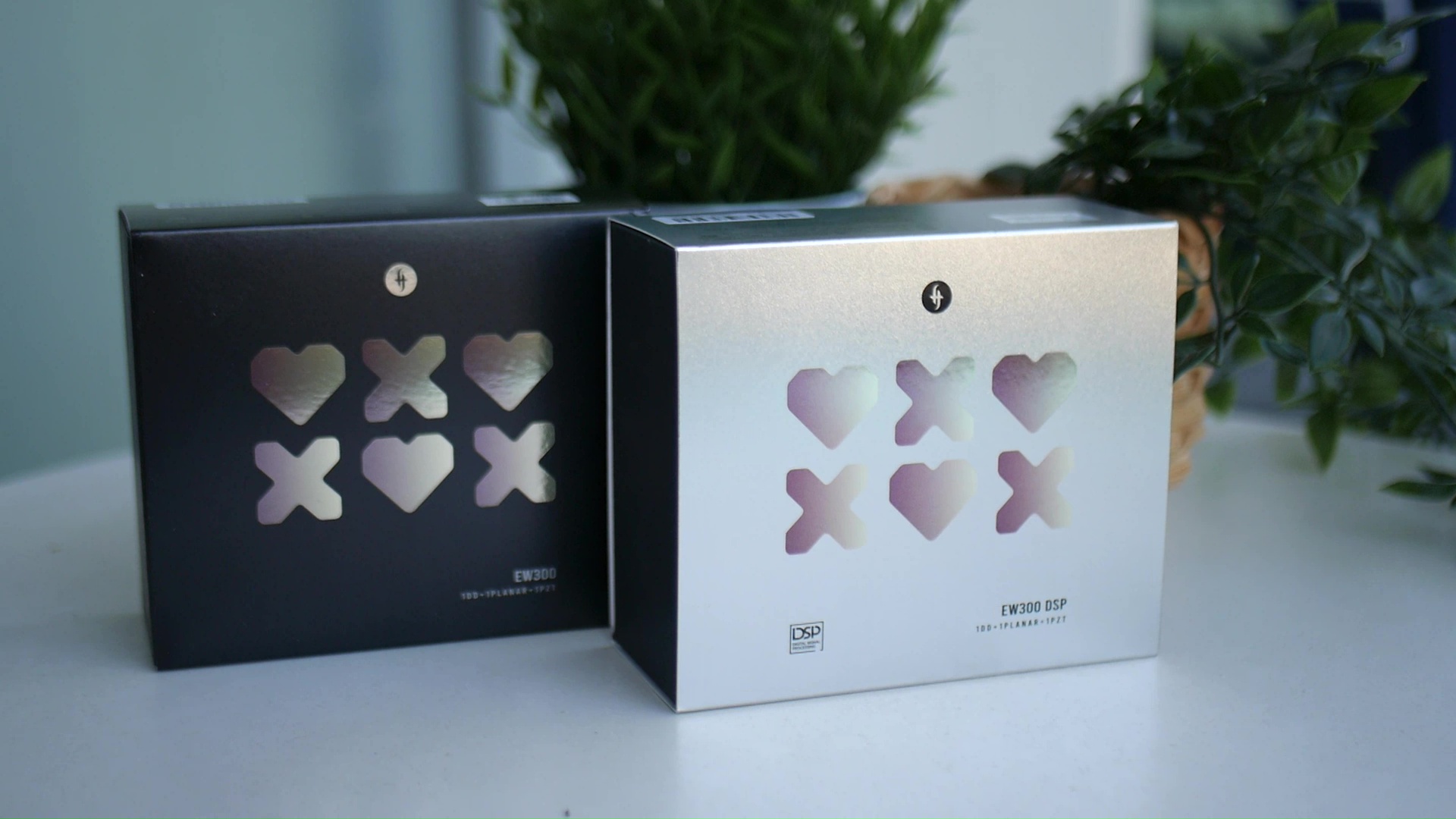

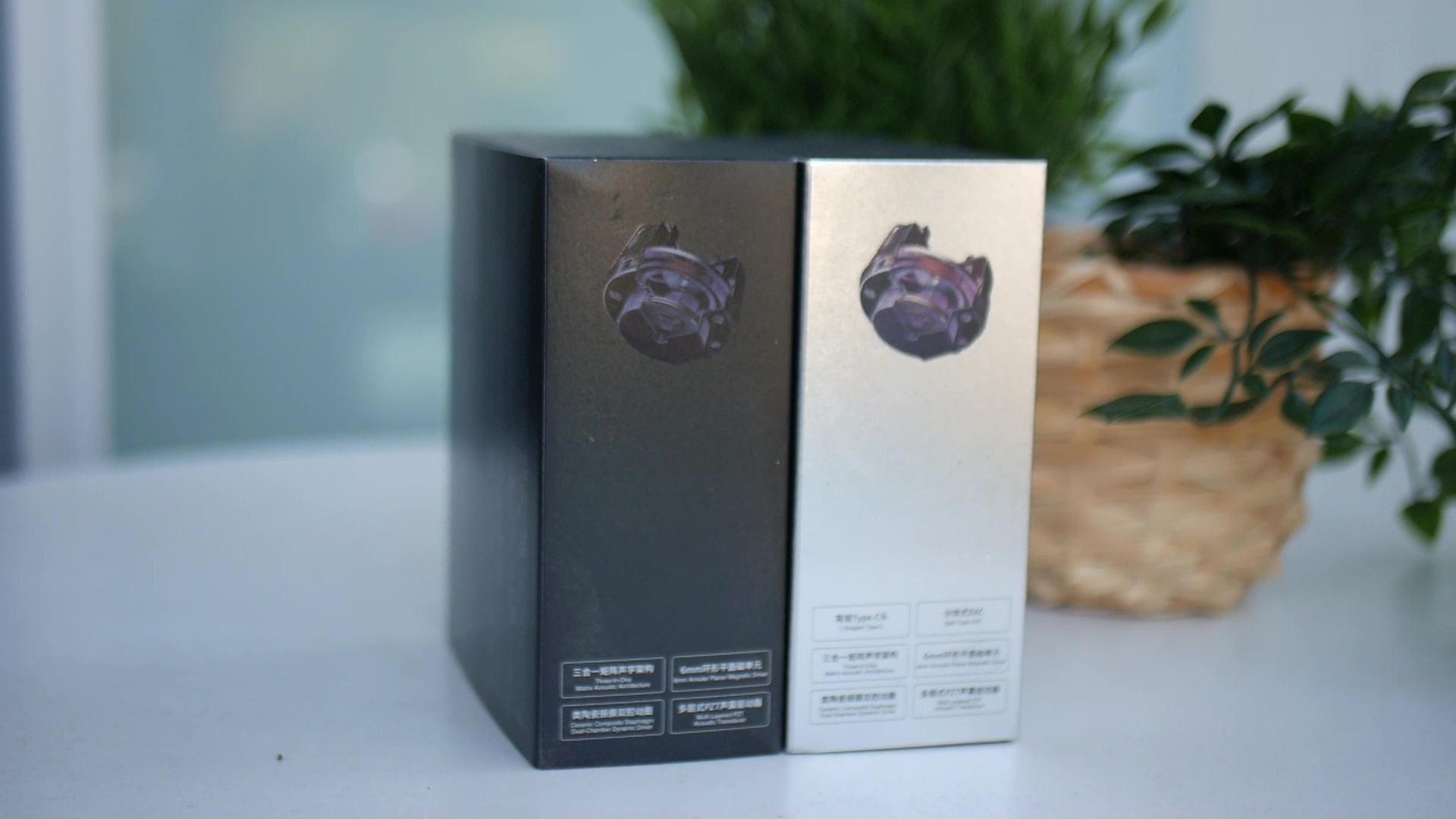
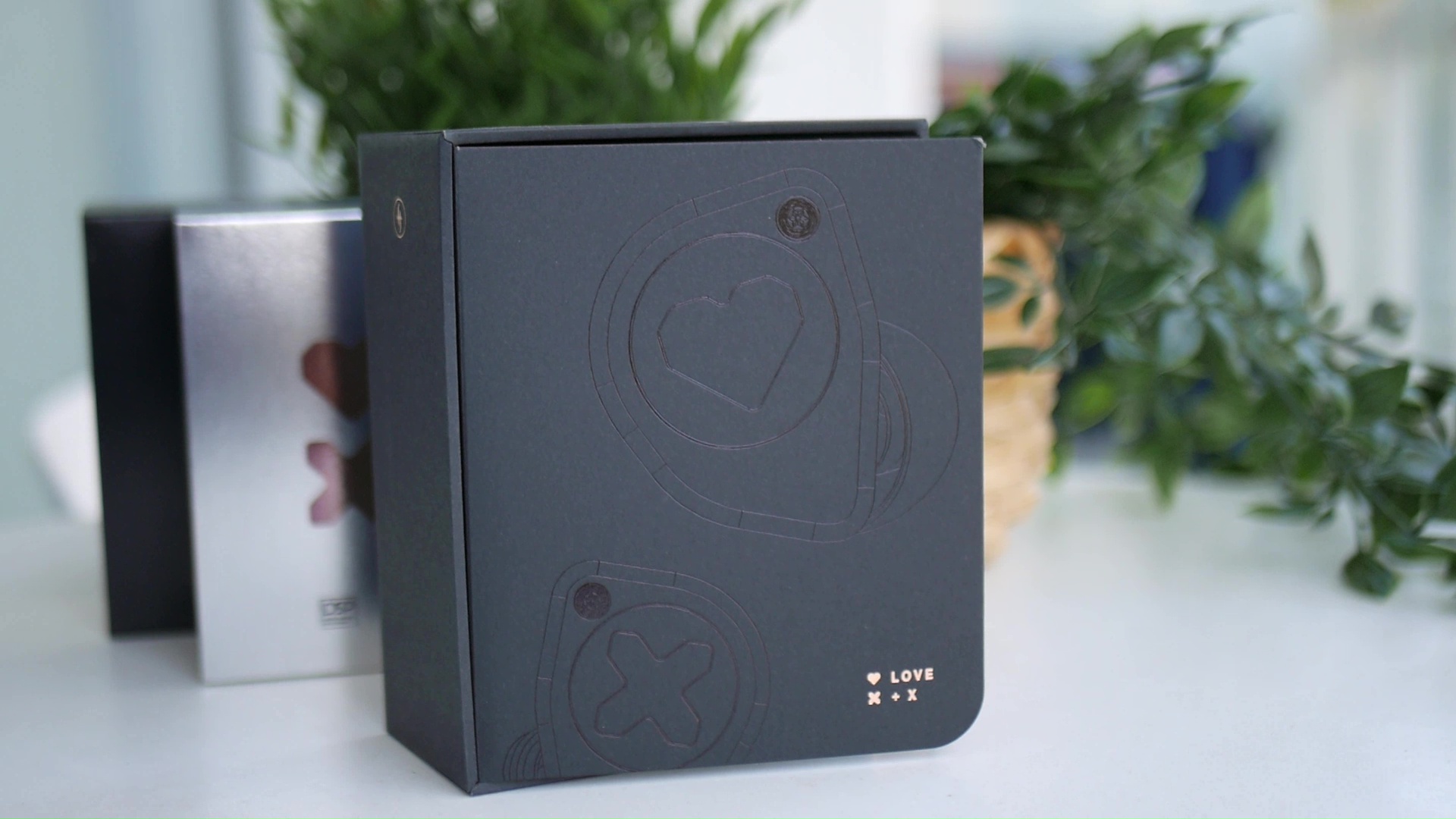
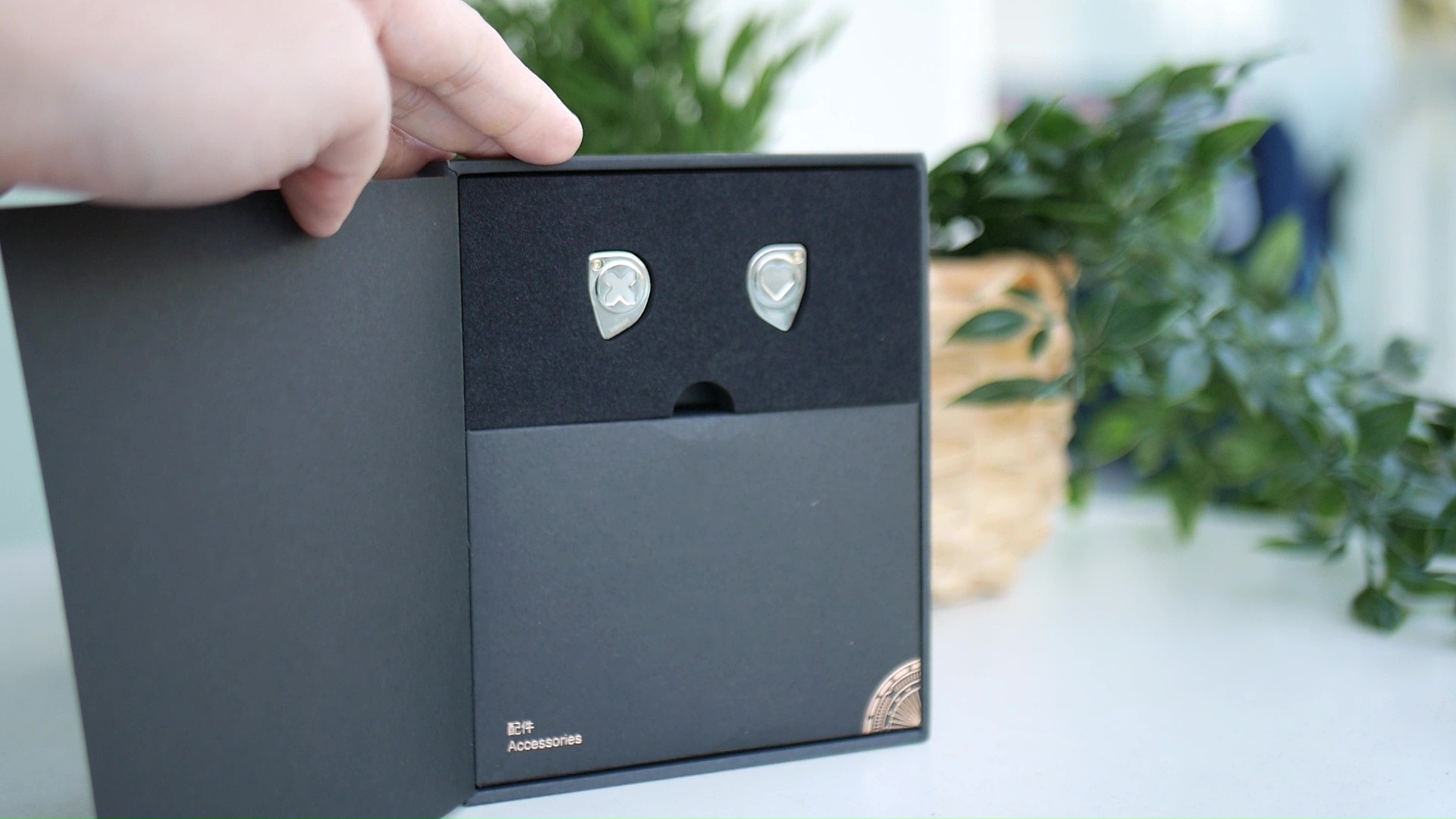
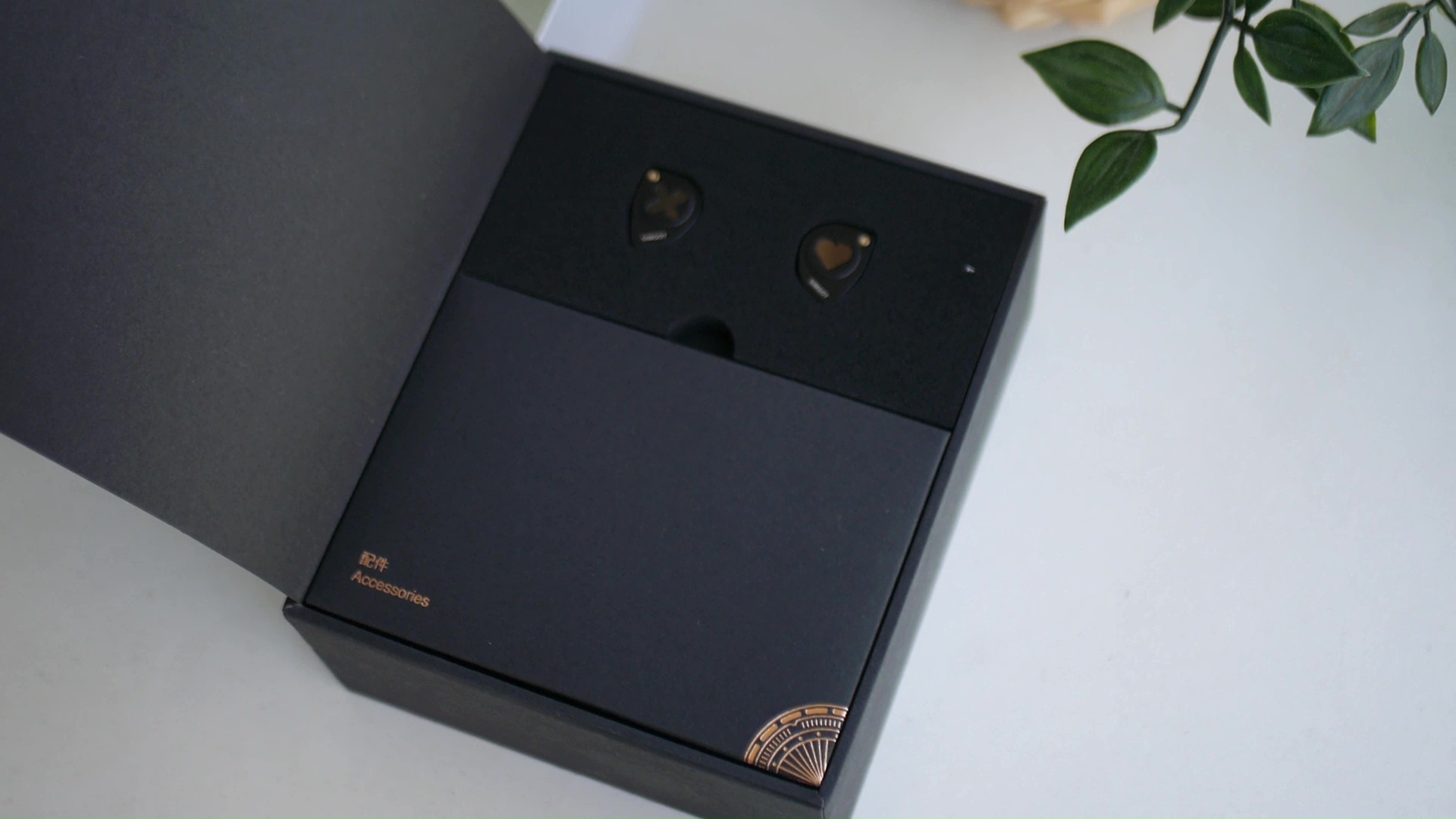
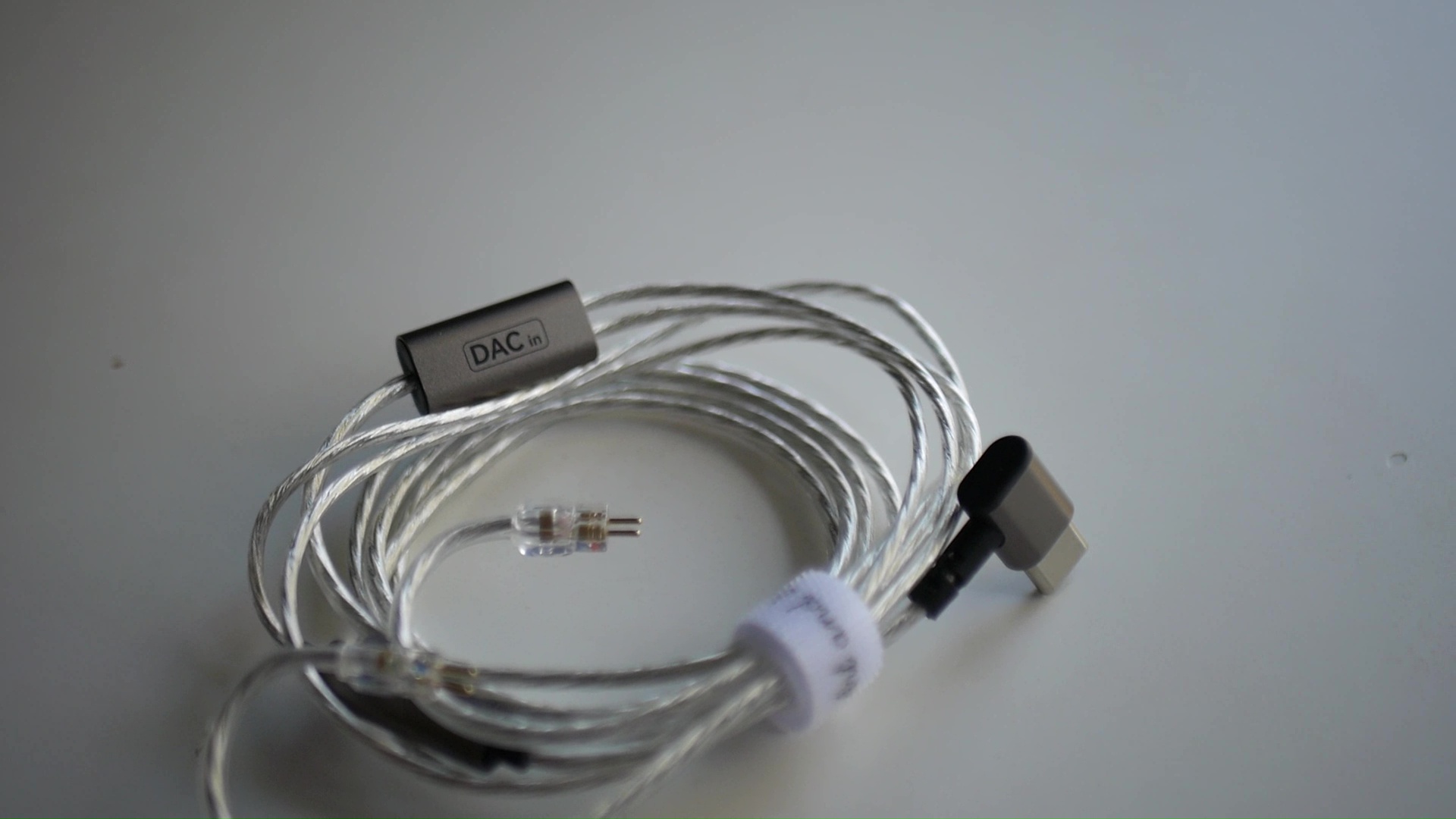
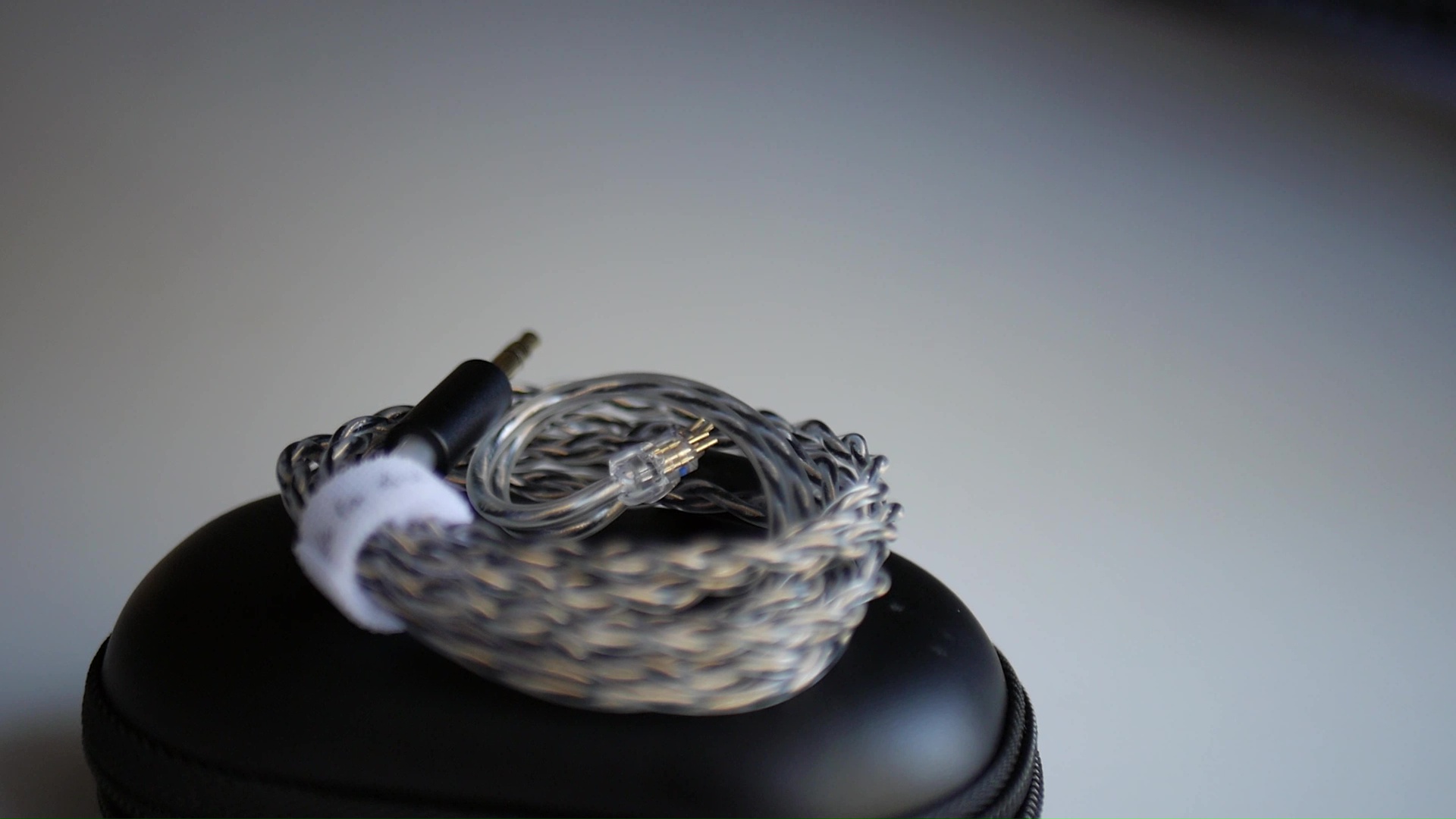
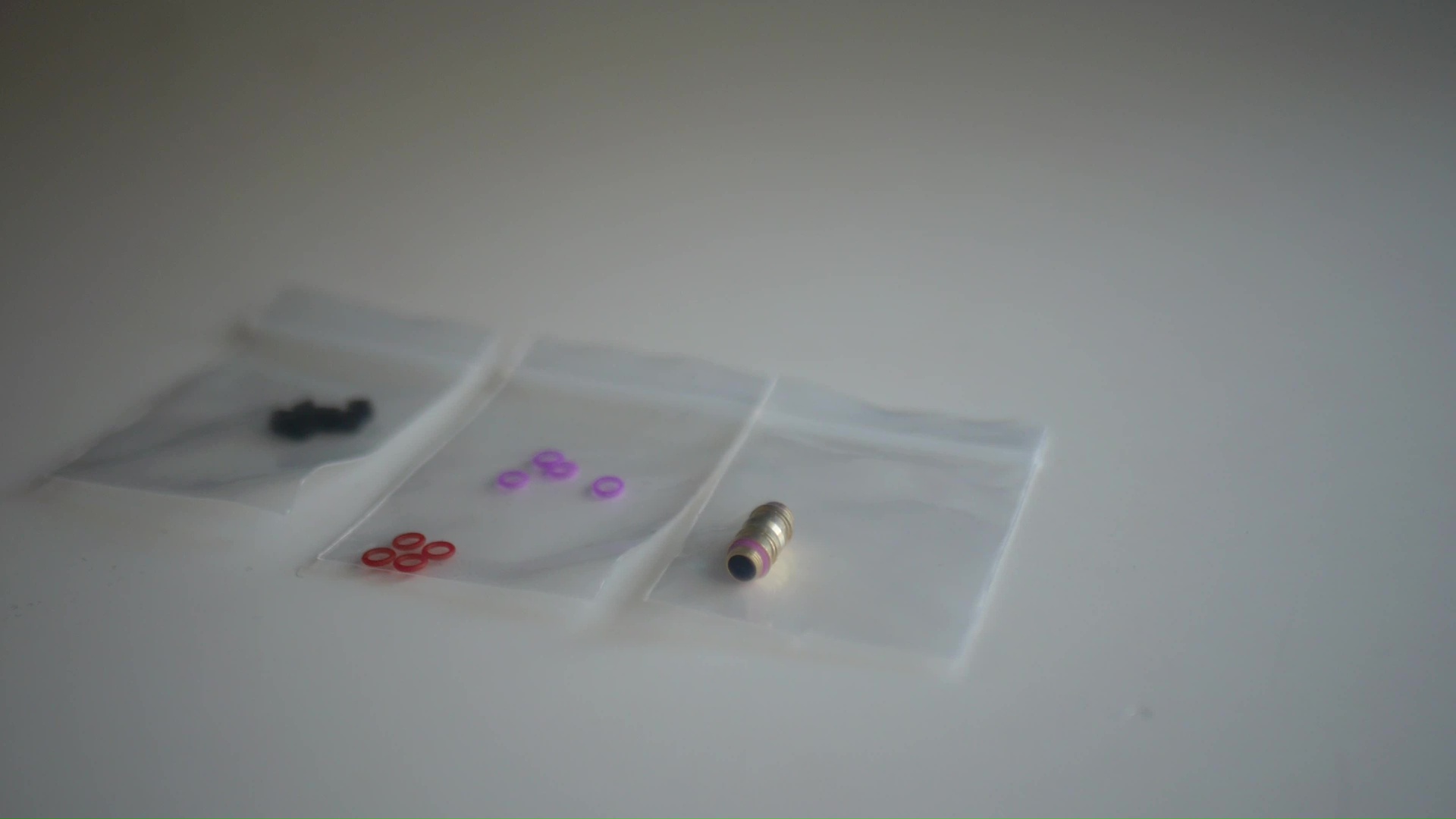
Ear pieces design The design of EW300 is rather whimsical and stylish that somehow reminds me of albums by Ed Sheeran. The visual design of EW300 centers around the X and heart symbol, which are engraved on the faceplates of the earpieces. The earpieces themselves are quite small as they share the shape of previous releases in the EW line. The nozzles are medium in width but unfortunately quite short, so I had a bit of problem getting these IEMs to fit consistently with the stock ear tips.
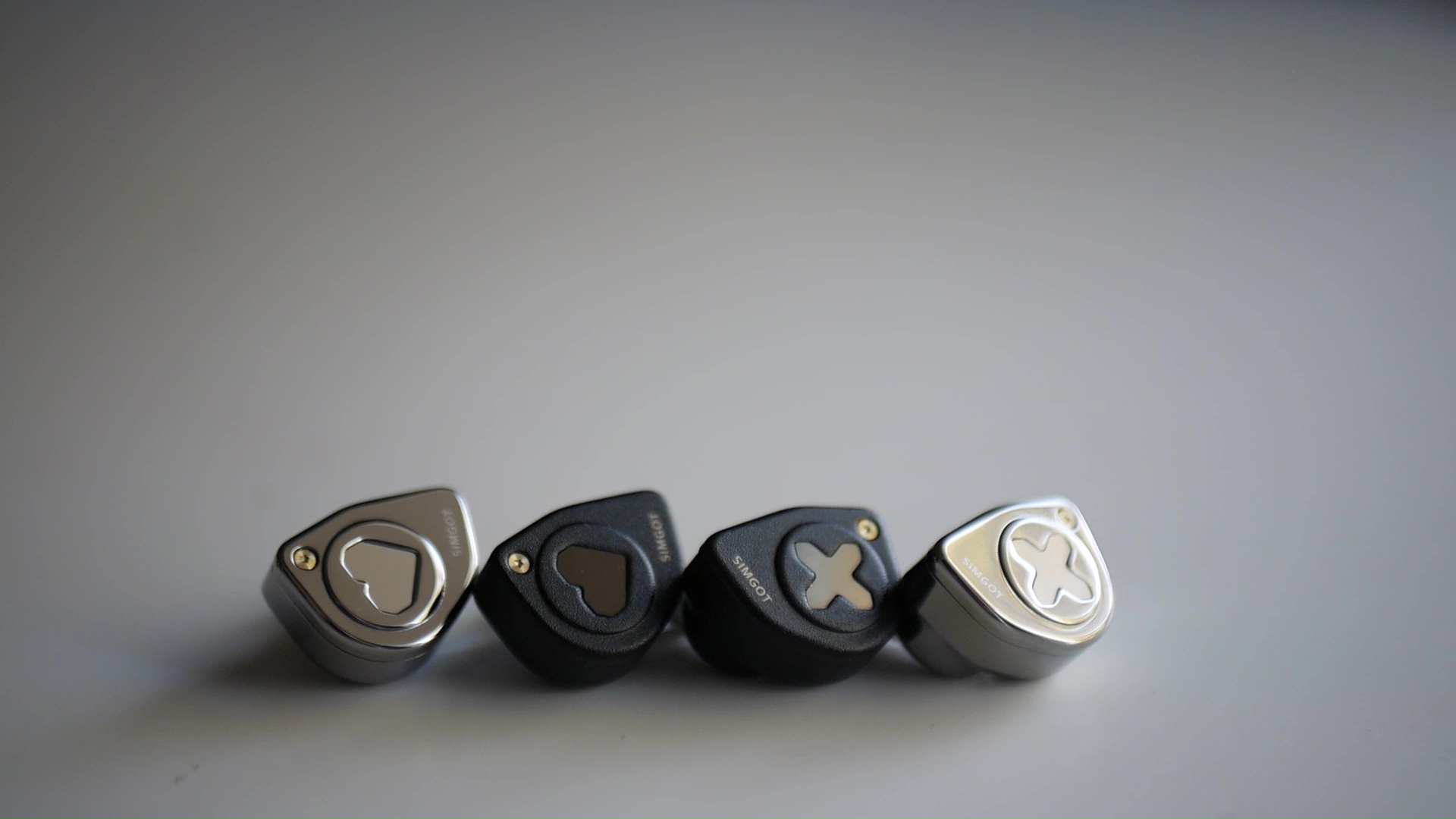
There are three color options for you to choose when ordering EW300:
- Chrome: shiny with mirror-like finished, which is a fingerprint and scratch magnet.
- Black: the earpieces have a mate black coating that feels very similar to the material used on professional DSLR cameras. The heart and X logos on the earpieces have a polished finish for added contrast. In general, a very handsome design.
- Grey: similar to the black design, but the heart and X logos have a chrome finish.
Fit, comfort and isolation As I mentioned, the earpieces of EW300 are quite small and the nozzles are short, so I have some difficulty getting the IEM to fit properly. With the right ear tips, I found the fit to be stable and comfortable. Noise isolation is similar to other vented IEMs. I did not experience driver flex nor pressure build up.
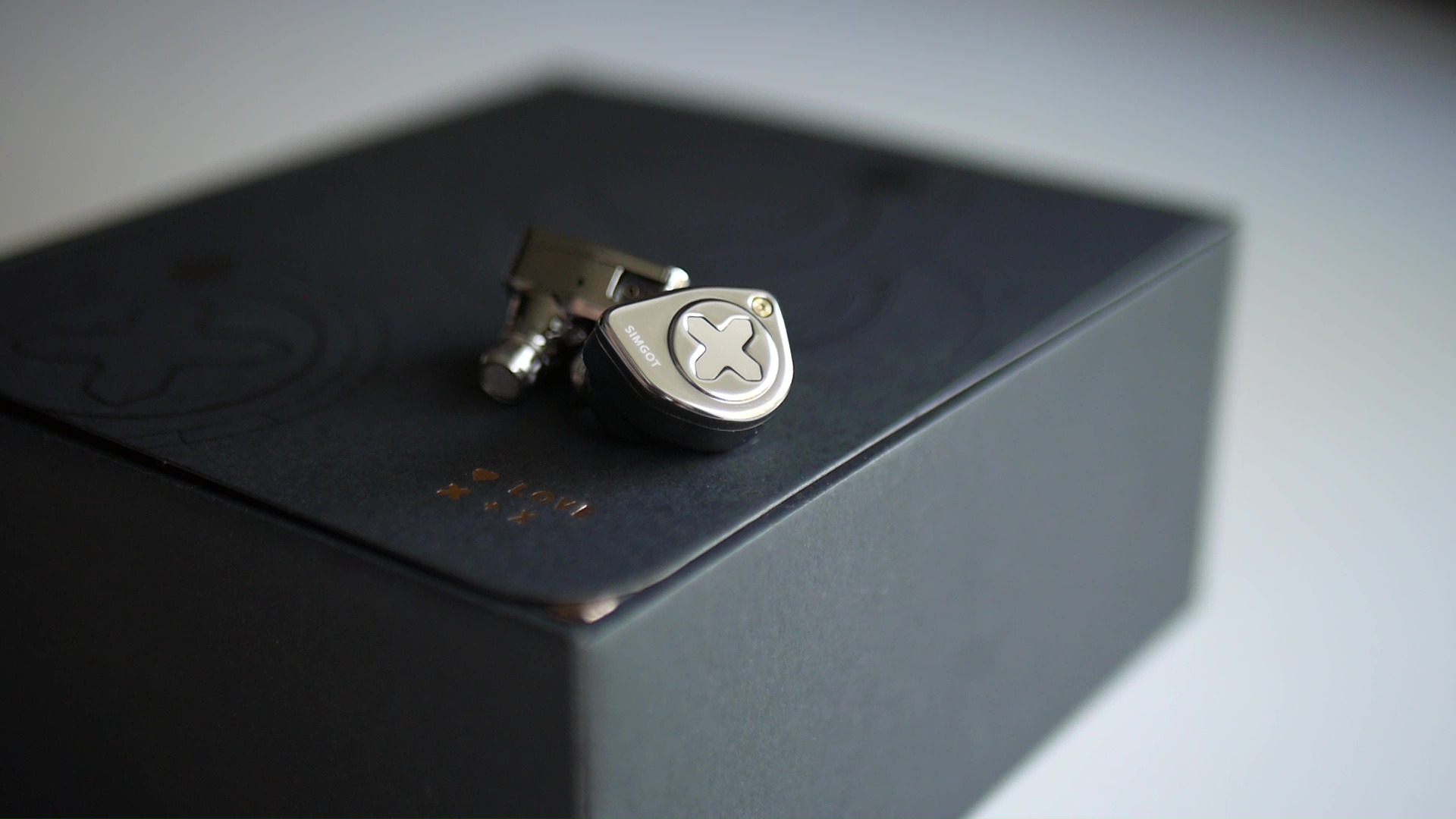
Ear tips recommendation: In order to get a good fit with short nozzles, my strategy is to extend the length of the nozzles by opting for longer and more flexible ear tips. I opted for the stock nozzles of Juzear 61T, which are very similar to SpinFit W1.
Sonic Performance
Testing setup:
- Sources: iBasso DX300, R3II, FiiO K7
- Cable: DSP cable, NiceHck 4.4mm cable
- Ear tips: Juzear 61T stock eartips in medium size.
The subjective impression is captured using the lexicon in the Sound Wheel below. I’ll clarify the terminology as I use them. If you want to see more details of the lexicon and related reference, please have a look at the technical report ITU-R BS.2399-0.
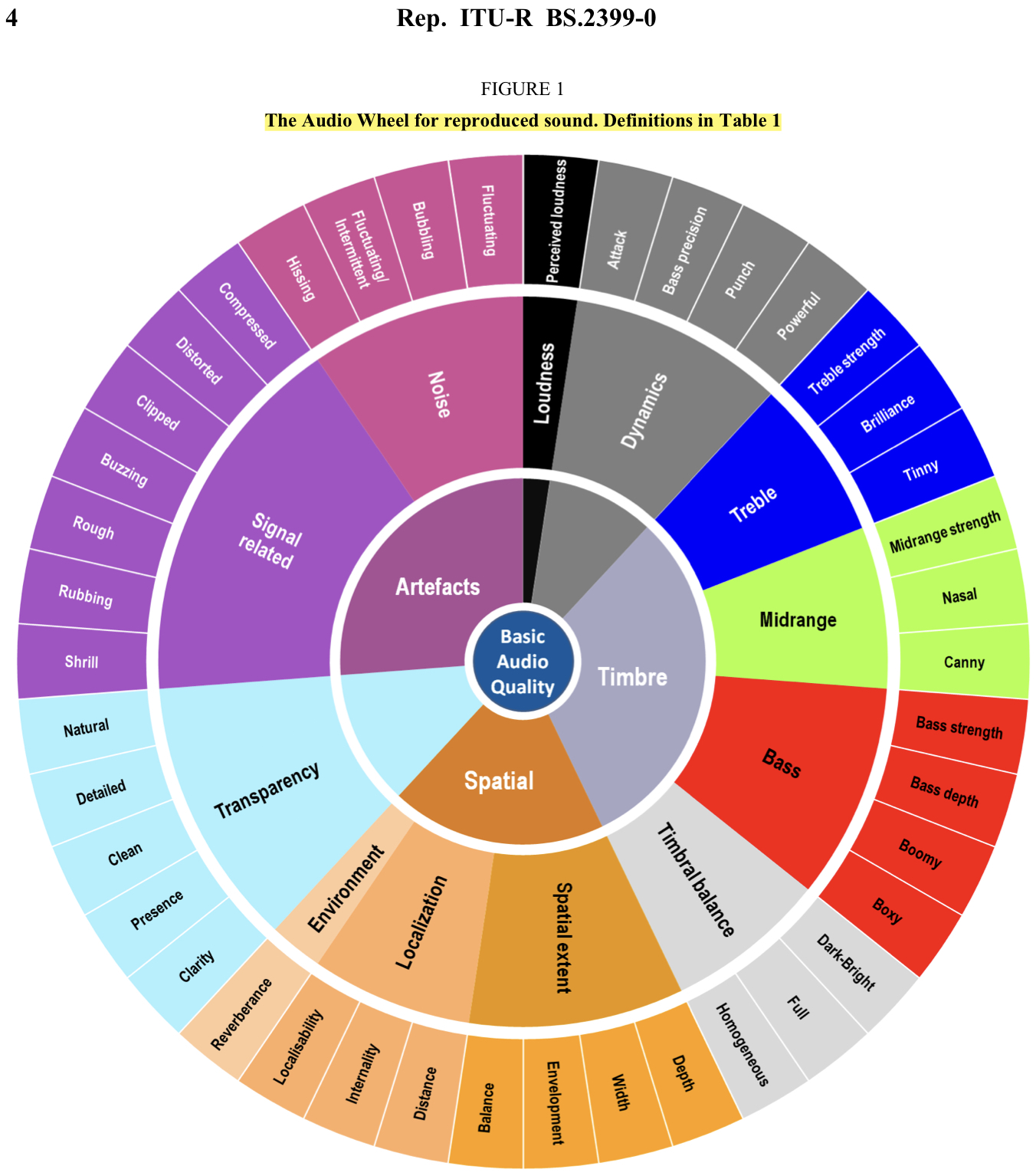
Timbre: It is helpful to think of an IEM as a filter that highlights or subdues different parts of the incoming audio signal. This effect can be measured objectively by the squiggly lines below, called Frequency Response (FR) graphs, which measure how loud an IEM is at different frequencies from 20Hz (bass) to 20kHz (upper treble). Subjectivity is how your ears and brain interpret the effect of that filter on your music and decide whether it is “enjoyable.” There are some “rules of thumb” when it comes to tonality, but most interesting IEMs usually bend the rules masterfully.
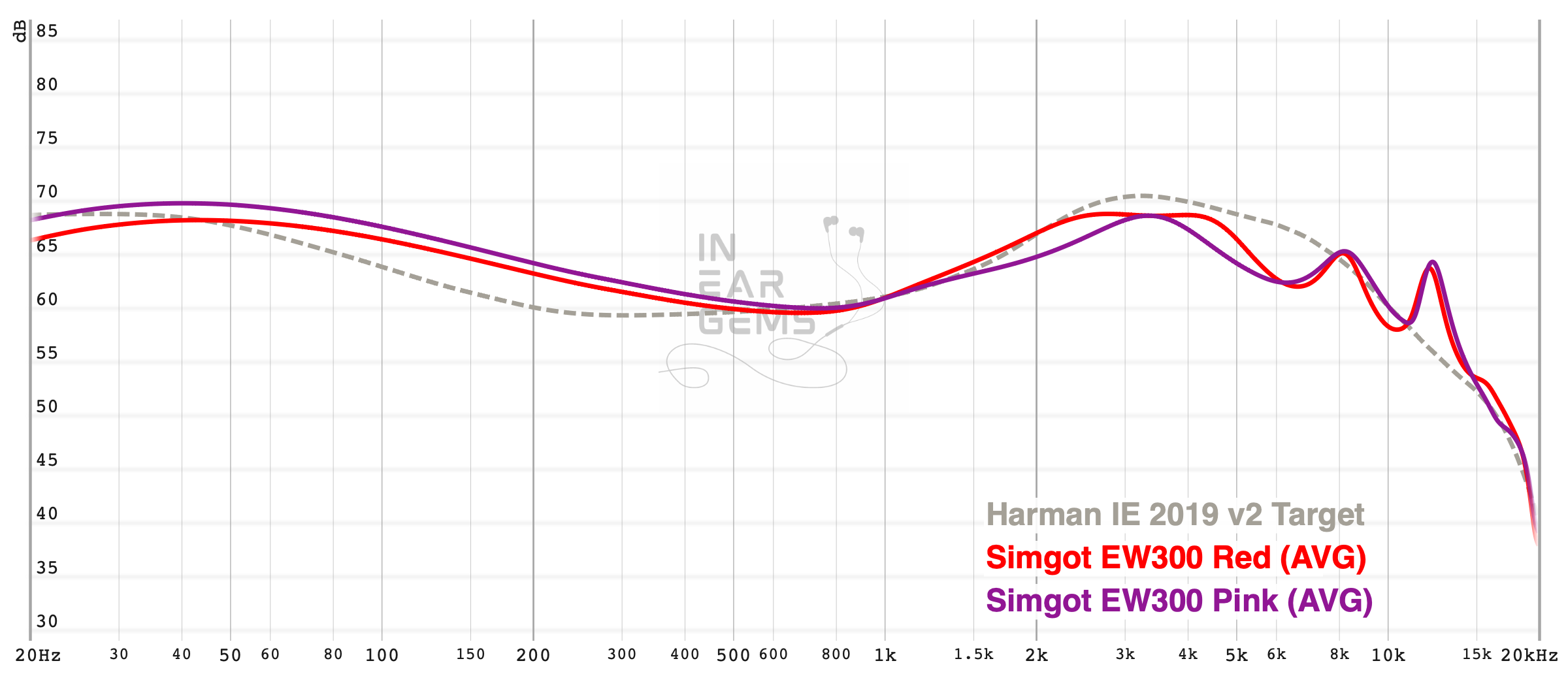
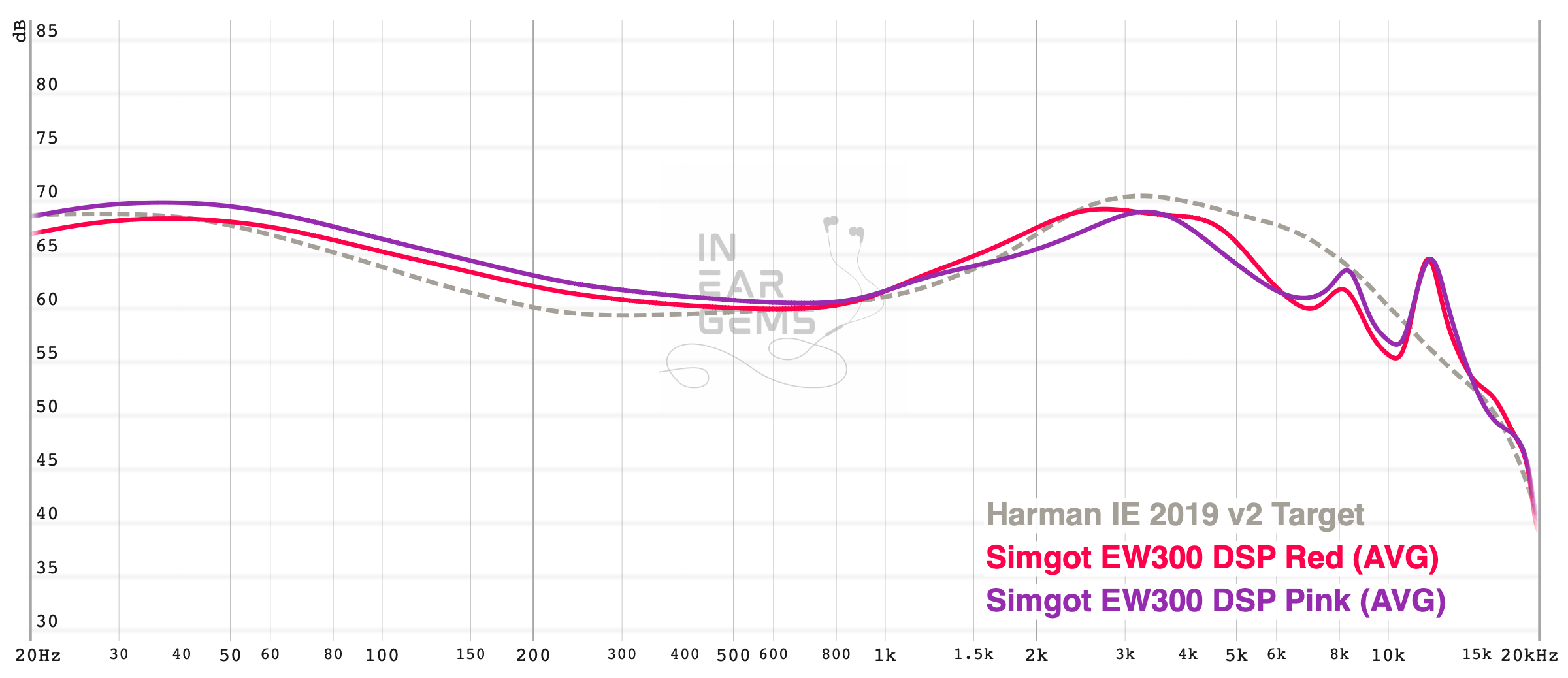
Figure shows the frequency response of EW300 standard and DSP editions against the Harman in-ear target. Measurements were done with an IEC-711-compliant coupler and might only be compared with other measurements from this same coupler. Above 8kHz, the measurement likely does not match the response at the ear drum. Visit my graph database for more comparisons.
Let’s discuss each variation of EW300 separately to reduce confusions:
- EW300 standard edition with silver nozzles (RED o-ring): This IEM has a neutral-warm tonality that is quite pleasing to the ears, with thicker lower midrange and less emphasised upper midrange. It means voices and instruments sound fuller, richer, and the higher notes are not as emphasised, leading to a more gentle and “musical” presentation. This tuning is quite a departure from the usual Simgot house sound and surprisingly quite close to one of my favourite tonal profiles, utilised by 7th Acoustics Supernova and Juzear 61T. It should be noted that this sound signature is still within the realm of “neutral” rather than overly thick and warm.
- EW300 standard edition with golden nozzles (PINK o-ring): The tonal balance of EW300 is tilted towards the bass and lower midrange frequencies. The midrange instruments and voices take a step back from the soundstage, away from the listener and buried underneath the bass energy. I find this tuning too recessed and muffled, making it my least favourite across all options.
- EW300 DSP edition with silver nozzles (RED o-ring): Comparing to the standard edition, the DSP has a thinner and arguably more neutral midrange. The midrange of EW300 DSP is nearly identical to that of the EA1000, meaning it is thicker and richer than full Harman IEMs, including Simgot’s own SuperMix4. Interestingly, Simgot also significantly reduce the mid-treble energy around 8kHz to reduce the harshness that some listeners reported with EA1000 and SuperMix4. That said, I found that the region between 3kHz and 5kHz stands out more with the DSP version, leading to some rare instances of sharpness when I listen to sibilant and harsh recordings.
- EW300 DSP edition with golden nozzles (PINK o-ring): This version of EW300 has a neutral-with-bass-boost, leaning towards L-shaped signature. The overal presentation somewhat similar to 61T, though the midrange sits further back in the soundstage, behind the bass. In general, it’s a fun and interesting sound signature that is quite usable comparing to standard edition.

In my opinion, the tuning of the silver nozzle (RED o-ring) is better with both versions of EW300. Therefore, I will stick to silver nozzles for the rest of this review.
Before we move on, I would also like to note that the earpieces of the DSP version is identical to those of the standard version (frequency response measurements below). All of the differences in the sound signature and technical performance that I describe below are all from the DSP cable.
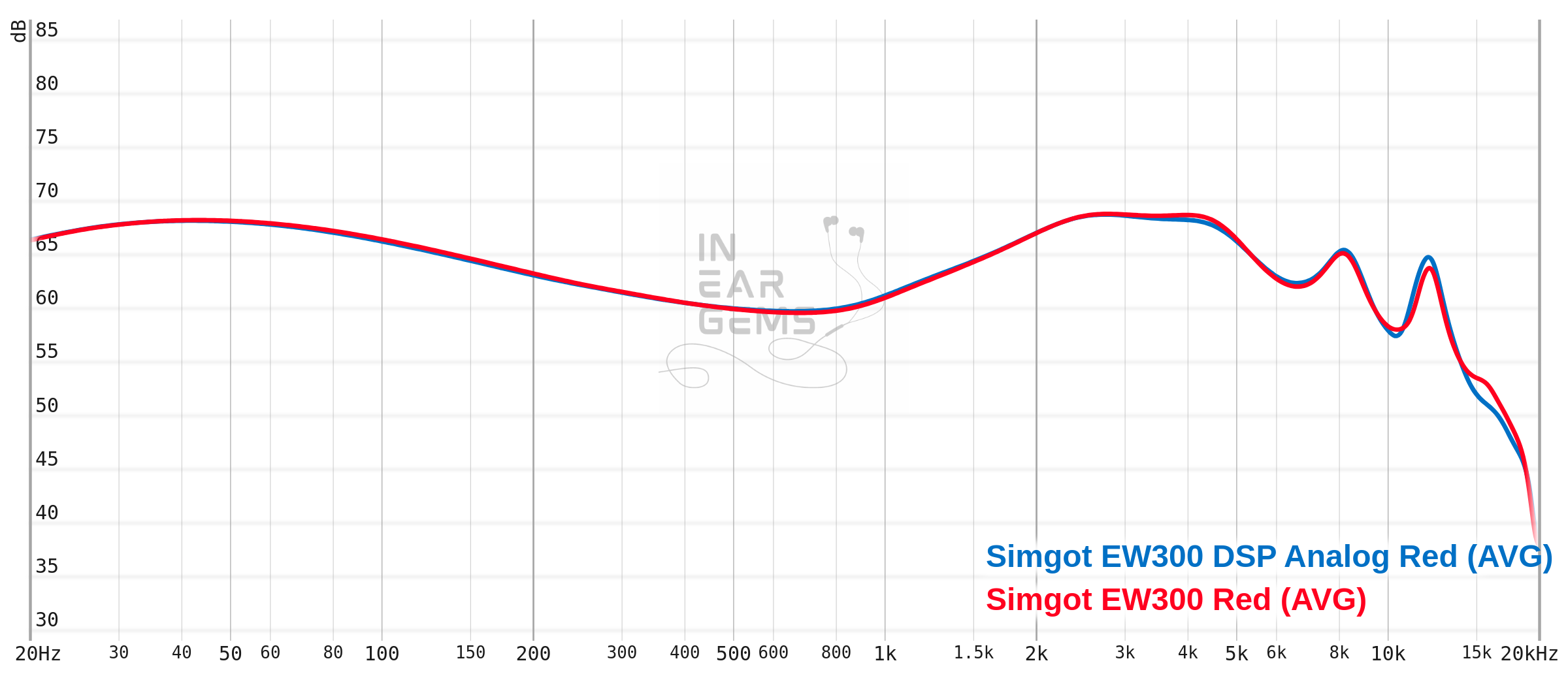
Now, let’s discuss how EW300 present various types of voices and instruments in some test tracks. The first track is Shivers by Ed Sheeran, which is invaluable for checking the harshness and sibilance of an IEM, as well as its balance across the midrange frequencies. An IEM with ideal tonal balance would be able to control the harshness (e.g., starting from the chorus section) and imbue an emotive “warmth” to Ed’s voice without making it muted or muffled. On the plus side, both versions of EW300 manage to avoid most sibilance and harshness with this track. The voice of Ed Sheeran sounds noticeably thicker with EW300 standard edition, reaching but luckily never passing the the point where the voices become muffled. The bass line also has more “boom boom” energy on EW300 standard edition. Meanwhile, the EW300 DSP is tighter and cleaner across the board due to having less lower midrange energy. A side effect of this tuning is that the soundstage of EW300 DSP version feels more spread out, with more space between instruments.

The next track is Kiwi wa Boku ni Niteiru by See-Saw, which is an excellent song to test the ability of an IEM to handle female vocals in “weeb musics.” An IEM with ideal tonal balance should be able to make the voice of Chiaki Ishikawa bright and clear, while maintaining enough energy in the lower midrange to avoid making the voice thin and harsh (a common problem with many IEMs with too much upper midrange boost). The observations from Ed Sheeran’s Shivers are applicable here. The EW300 sounds thicker with more midbass energy, whilst the DSP vesion sounds tight and clean. Both EW300 presents the voice of Chiaki Ishikawa quite pleasingly, so your preference be the tie breaker. Interestingly, both versions of EW300 showcase excellent soundstage imaging in this track: the background elements in the mix are convincingly pushed outside the headstage, not unlike how the SuperMix4 presents this track.
The next track is Now We Are Free by 2CELLOS, which assesses an IEM’s ability to render lower-midrange, particularly cellos. An IEM with ideal tonal balance should render cellos with a thick and authoritative tone and be able to reproduce the low pitch resonance and “rumble” of the cello body. At the same time, it must avoid cutting the upper midrange and treble to the point of making the cellos sound muffled, muddy, or lacking clear articulation. This track is where the tight and clean presentation of EW300 DSP version wins. I found the cellos to be a bit muffled and lacking texture with the EW300 standard edition, as if there is a veil dropped on the whole canvas. Of course, there are IEMs with identical midrange tuning that manage to prevent this veiled presentation, so I suspect that the 10mm dynamic driver being used struggles with this track.
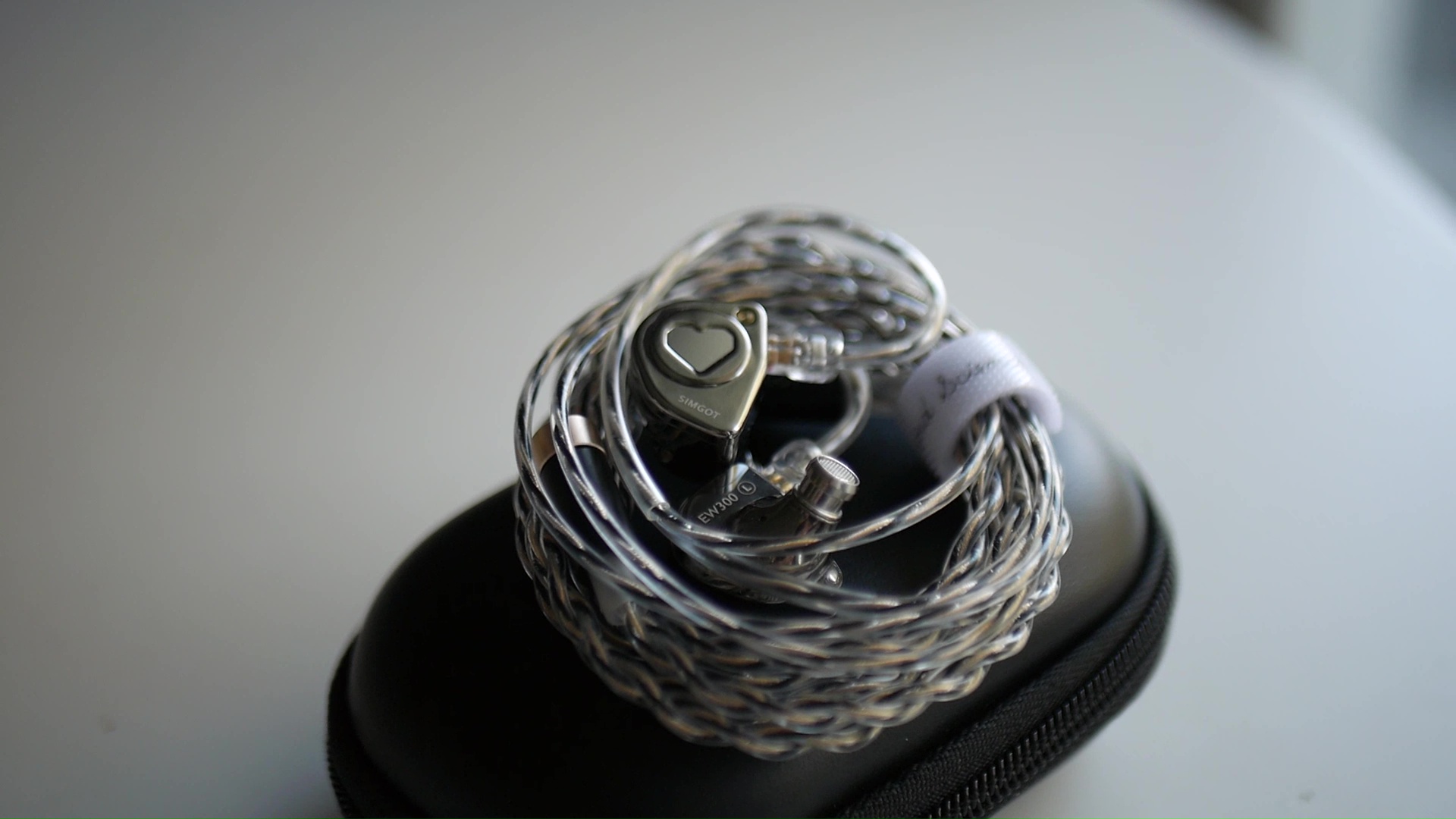
The next track is Playing God by Polyphia. I focus on the tonal quality and the level of energy conveyed by the guitars. This track also helps assess the balance of the bass against the midrange, which is reflected by the relative loudness between the bass guitar and the rest of the music. The tight and clean(er) presentation of EW300 DSP is awesome with this fast and well layered track. Guitar picks sound crisp and precise. Beats feel snappy and rhythmic. Similar to previous observations, I found that the EW300 standard edition a bit muffled and veiled. That said, you might prefer the thicker, more “boom boom” bass presentation of the standard edition.
The next track on our list is the aria of Bach’s Goldberg Variations, recorded by Lang Lang. I find that piano is the best instrument to assess the overall tonal balance of an IEM. Simply put, if the piano does not sound even across the frequencies, the midrange of an IEM is imbalanced. I found that both versions of EW300 sound relatively natural and pleasing, without any significant imbalance and timbral problem that ruins the performance. This track also highlights the impact of the thicker lower midrange tuning of EW300, which casts a warm veil over the entire recording. On the plus side, this warm veil ties different parts of the piano piece together, creating a coherent whole. On the other hand, I prefer a crisper separation between notes as well as between voices in the piece.
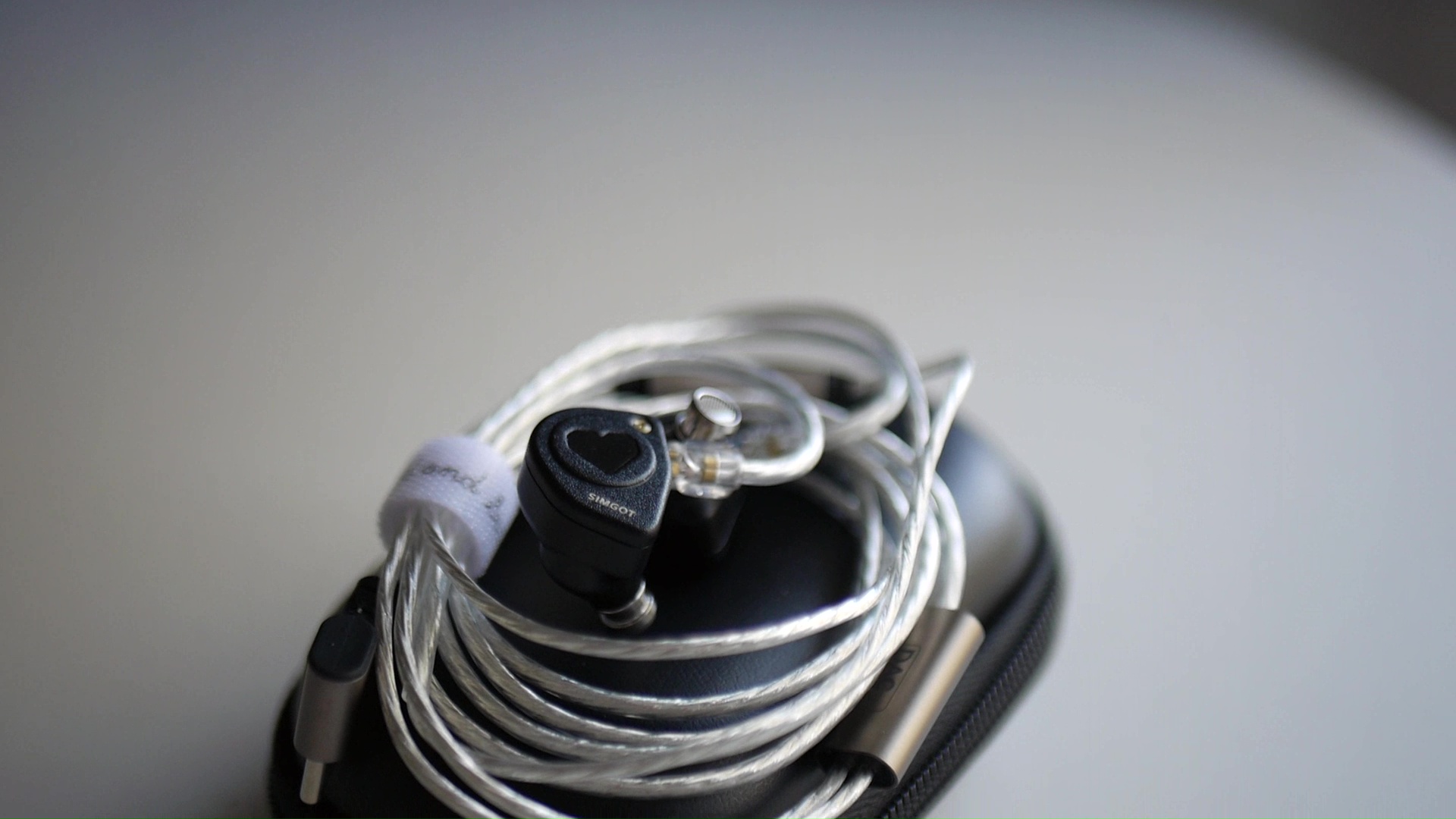
The next track on our list is Ciaccona from Bach’s Violin Partita No.2 in D Minor, performed by Kavakos. This track aims to assess two aspects: the rendition of violin and the reproduction of upper treble energy, which is reflected by the quality and detail of the reverberation and micro details at the decay end of violin notes. I think you must be tired to hearing this, but, yes, the EW300 DSP sounds tighter and cleaner whilst the EW300 standard casts a warm veil over the recording. The cleaner presentation of the DSP version makes violin pops and gives it a clean and dry texture, increasing the perceived details of the strings. The clean presentation also makes it easier to hear the reverberation of the recording hall. On the other hand, the warm hue of the standard edition gives the track a cozier vibe, at the expense of details and reverbation. I prefer the DSP version, but your preference would be the ultimate tie breaker.

The final track on our timbre test is Synchro BOM-BA-YE by Tokyo Kosei Wind Orchestra. This track aims to test the tonal balance and timbre of the upper midrange and treble region. There are two cues I focus on in this track: the hand claps at the beginning, and the tonal quality of all brass instruments throughout the track. Both versions of EW300 does an excellent job with presenting the treble, as I was not able to detect any problem with the claps and the brass instruments. Again, the DSP version presents a clearer, tighter, and more vibrant recording whilst the standard version is more cozy and coherent. I prefer things to be clear-cut and pop, so I prefer the DSP. You might prefer the coherent presentation of the standard version instead.
Bass and perceived dynamic:
Despite using the same driver topology, the bass and dynamic of both EW300 versions differ quite a bit. Percussion instruments sound “tighter” with sharper attack, quicker decay, and a “dry” texture that can reveals quite a bit of smaller details in the bass line. As a result, the bass of EW300 DSP version feels precise. On the other hand, the standard edition sounds more boomy with more rounded attack, longer decay, and less textured. Both versions do a good job at conveying the energy of bass notes. In other words, I have not felt the lack of physical impact when listening to either version of EW300. Your preference would decide whether you prefer the snappy bass of DSP version or the boomy slammy bass of the standard version. Personally, I prefer the DSP version.
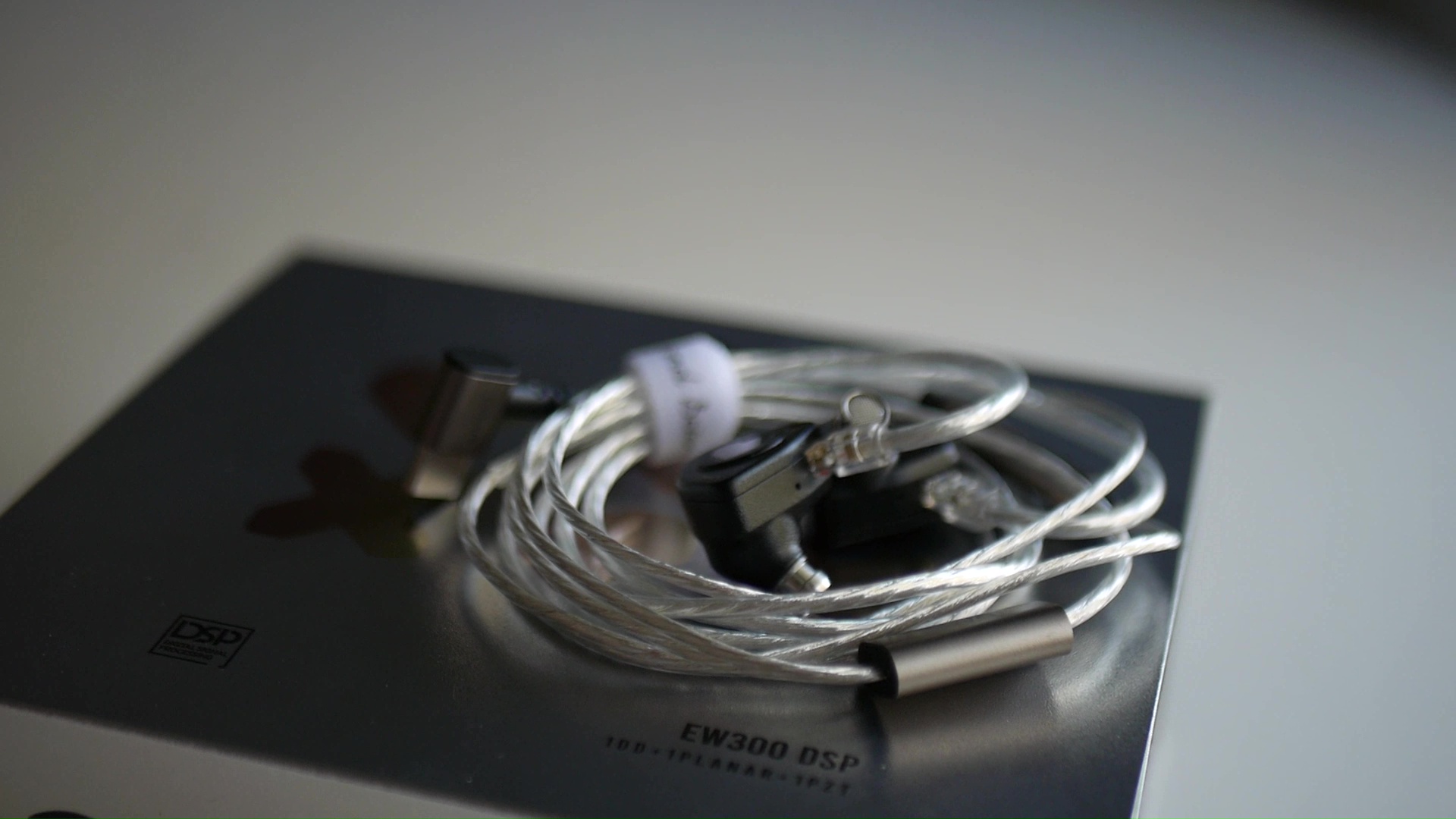
Resolution: To me, “resolution” can be broken down into three components: (1) Sharpness, incisiveness, or “definition” of note attacks (see the figure above). (2) The separation of instruments and vocals, especially when they overlap on the soundstage. (3) The texture and details in the decay side of the notes. The first two give music clarity and make it easy to track individual elements of a mix. The last provides music details and nuances.

The perceived resolution in terms of both note definition and detail retrieval of the standard and DSP version differ quite a bit, surprisingly. The DSP version sounds more incisive, meaning note attacks are crisper and cleaner. Voices and instruments are more well defined with stronger clarity and sense of details. In busy tracks, the instrument separation of the DSP version is also better. Whilst the standard version is far from inadequate in terms of resolution, the DSP version is at least half a step ahead, in my opinion.
Let’s elaborate on the resolution of EW300 with some test tracks. For the first track, we again listen to Ciaccona from Bach’s Violin Partita No. 2 in D Minor, performed by Kavakos. I focus on the micro details such as the bow catching the strings. I also focus on the quality and nuances of the reverberation and decays of the notes. Like I mentioned above, the DSP version is more incisive and detailed than the standard version. When I compare the DSP version against the venerable Moondrop Blessing 2, my benchmark for good resolution (3/5 rating), I was surprised to find the EW300 DSP to be more incisive and detailed. It means every note of the violin, every articulation of the bow is more well-cut, cleanly defined with the EW300 DSP. The micro details of the bow catching the string is also better on EW300 DSP.

The next track is the “controlled chaos” ABC feat. Sophia Black by Polyphia. With this track, I focus on an IEM’s ability to not crumble under the complexity of overlapping layers in the mix. An IEM with ideal resolution would make it easy for me to hear everything, down to the very faint overdub by Sophia Black on the side channels right from the opening of the track. Again, the EW300 DSP is marginally more incisive than Blessing 2. But still, but do a decent job with this complex track and are quite close in the grand scheme.
Stereo imaging and soundstage: Stereo imaging or “soundstage” is a psychoacoustic illusion that different recording elements appear at various locations inside and around your head. Your brain creates based on the cues in the recording, which are enhanced or diminushed by your IEMs, your DAC, and your amplifier. In rare cases, with some specific songs, some IEMs can trick you into thinking that the sound comes from the environment (a.k.a., “holographic”)

Both EW300 inherits the uncanny, “floating” soundstage effect from the SuperMix4. This effect does not work with every track, and it depends on how you wear the IEMs. With the right track, the soundstage of both EW300 can sound quite interesting with instruments seem to float inside and around my head, and the background elements of the track such as distant choral or string sections can feel like they come from outside the head. That said, I found that this effect does not appear as consistently and frequently as it does with SuperMix4. When this effect does not kick in, the soundstage and imaging of both EW300 versions are rather ordinary in the grand scheme. The DSP version has more spread out and open soundstage presentation, possibly due to the tuning difference.
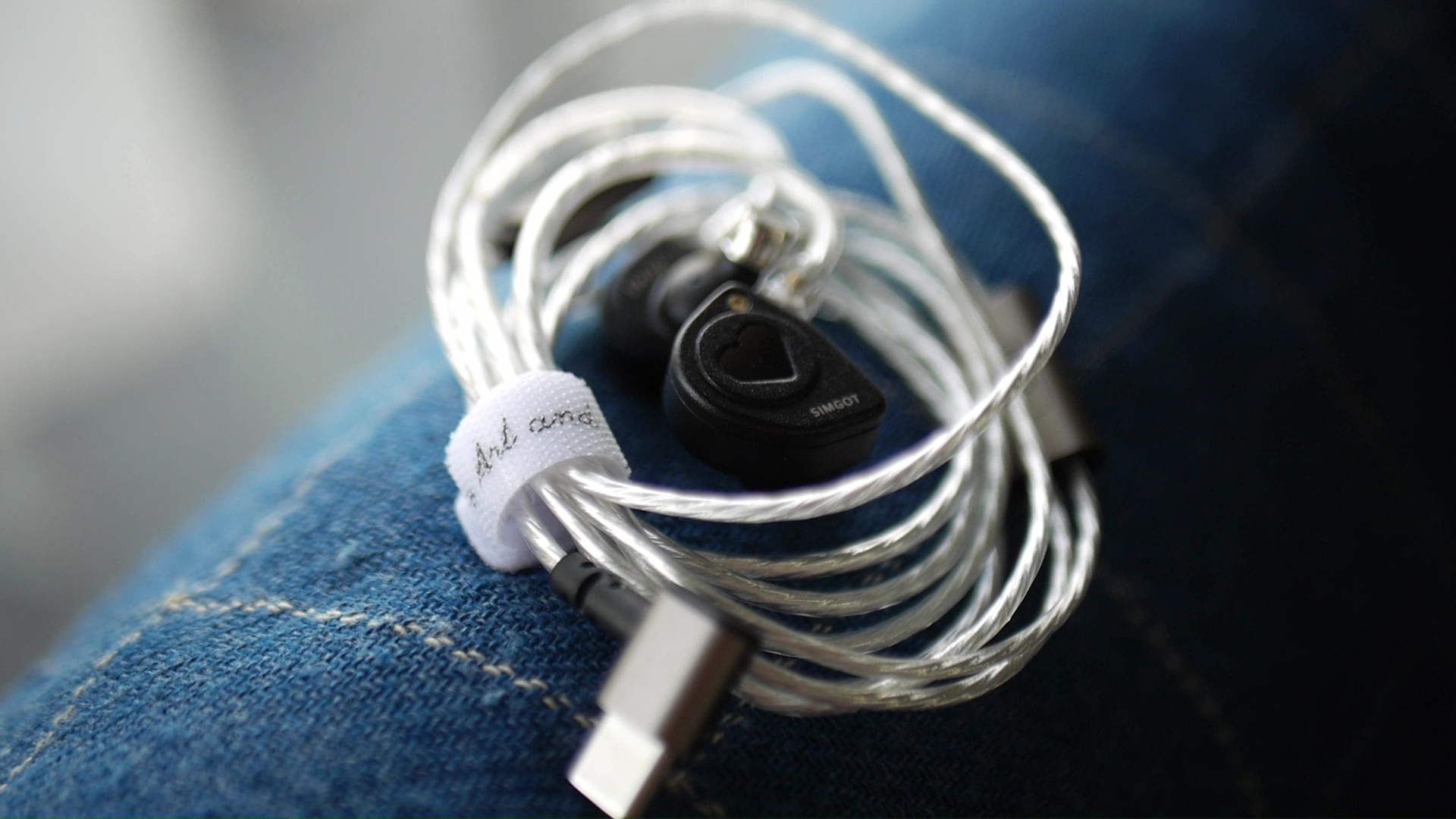
Let’s listen to some test tracks to assess the soundstage and imaging capability of EW300. The first one is Original Sound Effect Track - Memory from Gundam Seed Destiny OST album. This track compiles all sound effects used in the show, arranged atmospherically and immersively. An IEM with ideal soundstage and imaging should effectively utilize this information to create a diverse soundstage, with sound elements appearing in all three dimensions, offering contrast between near and distant sounds. Many elements on the left and right channels will seem to originate outside the ears. This track is the one that triggers the uncanny soundstage effect of both EW300 versions, making some background elements like the horns on both sides of the stage feel like they come from outside the earpieces. My main criticism here would be that the positioning of sound effects within the stage is laser sharp. Despite my best effort, I cannot seem to pin point the position and distant of the sound effects beyond the general area they reside on the soundstage. Still, I find the soundstage of the EW300 DSP more interesting than that of the Blessing 2, as the EW300 DSP conveys a stronger sense of depth (i.e., contrast between near-to-far sound), leading to a more 3D presentation.
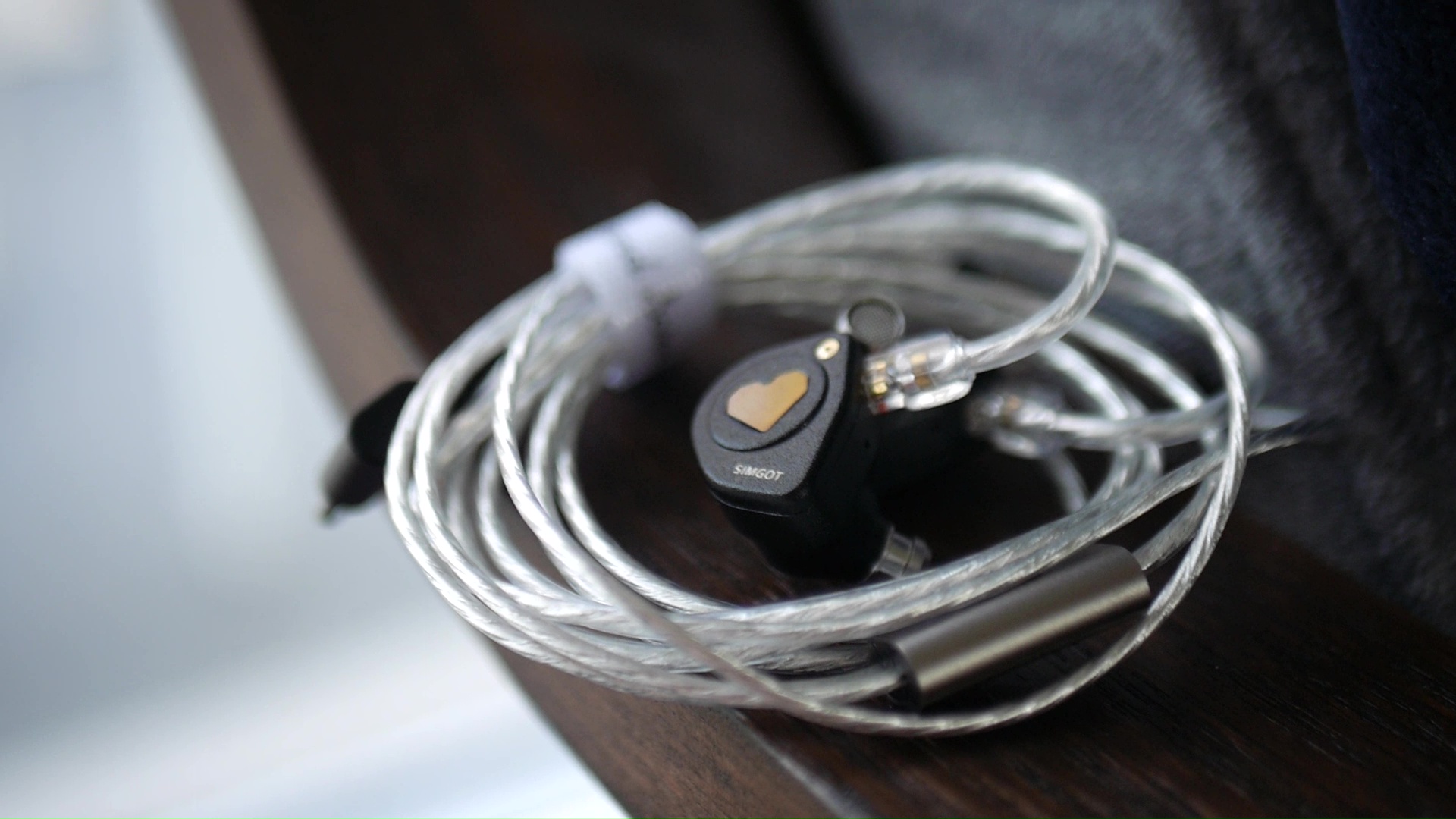
The next track is Shadow of Baar Dau. This one tests an IEM’s ability to convincingly convey the sense of distance of background elements, such as the string section at 00:20 on the front left and the vocal chants on the front right at 00:40. An IEM with perfect soundstage and imaging should make this track feel spacious, creating an illusion that some background elements originate outside the head. In essence, it should provide a fully immersive listening experience. The EW300 DSP presents this track in an atmospheric and immersive manner. I like how 3D and “wrap around” the soundstage feels. I also appreciate how the background elements seem to be casted further into the room. In A/B tests against my benchmark for good soundstage, the Blessing 2, I found the soundstage of EW300 DSP to be more 3D and ultimately more interesting.
Driveability
EW300 standard edition is quite easy to drive. It can get loud out of anything and does not hiss easily, even when paired with my desktop amplifier K7.
Driveability is of course of a concern with the DSP version. You just need to plug it to a device with USB-C output, set the volume, and you are good to go. My only complain here is that the volume of the DSP cable is quite loud with both MacBook and some DAPs such as my HiBy R3II. In particular, I only needed 5/100 on R3II to reach the limit of my tolerance. Interestingly, the volume does not get loud that quickly on my Linux desktop. Besides the loudness, I did not detect any hiss with the DSP cable, which is good.
Conclusions
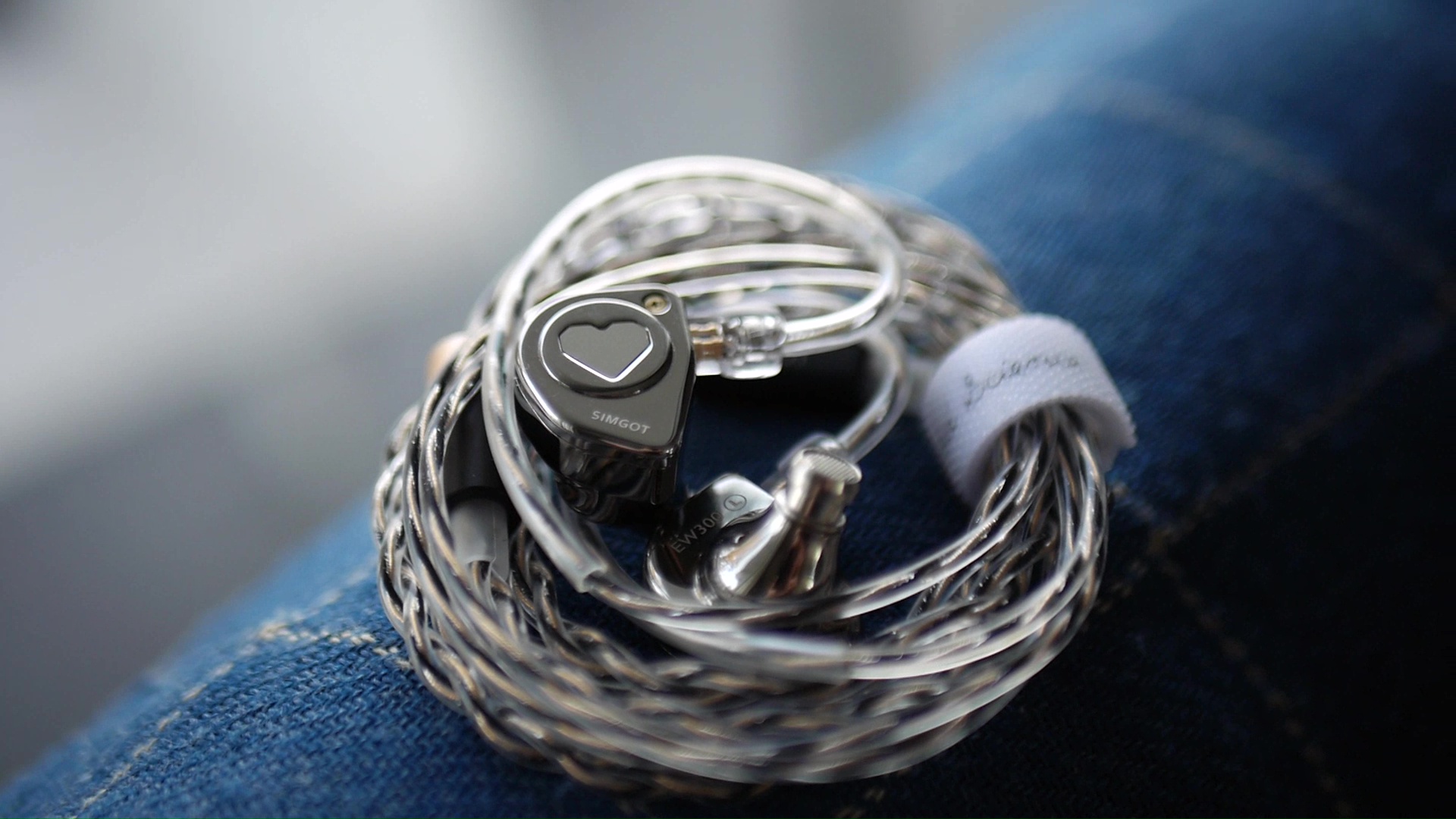
EW300 is a pretty nice budget-friendly IEM with a tribrid configuration that works. The tuning is also a refreshing departure from usual Simgot’s house sound, with less harshness in the lower treble and thicker midrange. I’m particularly impressed by the DSP version. If you plan to add another Simgot IEM into your collection, the DSP version receives a recommendation from this reviewer.
What I like about this IEM:
- Improved tonality that is more pleasant without losing correctness (DSP version)
- Incisive bass with good texture (DSP version)
- Good soundstage, retaining some “special sauce” of the SuperMix4
What could be improved:
- Short nozzles make fit a bit tricky
- The DSP cable gets loud too quickly with some devices
- The midrange of the standard version can sound a bit veiled
Absolute Sonic Quality Rating: 3.5/5 - Good (DSP version)
Bias Score: 4/5 - I like this IEM (DSP version)

